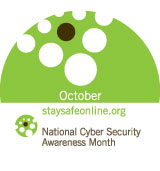When financial institutions don't implement proper procedures to protect our accounts from fraud and ignore the need to develop safeguards that can detect fraud, -here's a sad example of what happens to innocent consumers...
My blog of October 11th pointed out a story in which my friend Julie, and her family had their personal identifying information stolen. The thieves were able to immediately access Julie's savings account making several withdrawals totaling about $500.00.
Julie immediately filed a police report and then took on the task of contacting her creditors and financial institutions to notify them and thwart any further theft or access to her checking and savings accounts. When Julie was able to reach her bank to inform them of the initial theft, she was unable to speak with anyone from the bank's fraud department -rather she was informed to call back when they were open relaying they're "not open on weekends or holidays".
Julie then diligently forwarded on copies of her police report and Identity theft Affidavit and continued her mission to inform everyone and anyone she had accounts with that she was in danger of fraud. She spent hours notifying all creditors and closing all of her accounts and reactivating new ones. She additionally requested that all of her accounts be red-flagged and noted that her personal identifying information was stolen and accessed -then she additionally changed all her passwords.
She believed she had done all she could do to ensure she successfully blocked the thieves from gaining access to her money...but she was wrong!
Here is a continuation of what has happened to her since that initial theft...
Even though Julie had taken all the required precautions to prevent a thief from gaining access to her accounts -it seems her financial institutions did not.
While recently reviewing her account online on a Friday evening, she was stunned by what she discovered. Her new account had not only been accessed, but showed several bounced check charges and three separate withdrawals that she didn't make. Julie immediately contacted her bank and ended up spending several hours being bounced from department to department because again she was informed that the "Fraud department is closed".
She legitimately had concerns and asked the bank representatives to explain how this could happen...
How did the thieves get her new account numbers?
"What are you going to do to make sure the balance in my account is drained?"
After several hours, she finally she reached a bank representative who attempted to explain her theory of how her "new" account was accessed.
It seems that someone had come into the bank and deposited a several checks written on various accounts all made payable to Julie. They must have pretended to be Julie and requested a bank teller to provide the new account number to deposit them. Then as quickly as the bank supplied the account number, the thieves deposited the bogus checks -checks that would eventually bounce, but not before they withdrew nearly $5,000.00 from Julie's account from another branch of their bank.
The bank representative then admitted - it appeared to be bank error. When Julie asked how she could protect her account from being drained further, the bank's response was even more amazing. Julie was told she would need to wait until Monday to contact the fraud department stating "the fraud department is closed on the weekend". The representative went on to say, "you should withdraw all your money, we've have done all we can do to protect it!"
That's exactly what she did -and it was a good thing she did. A few days later she received a call from the bank, informing her that another deposit was made into her "new" account and an attempted withdrawal of $1800. was initiated and it seems the thief made off with the bank's money.
When consumers do their part to protect their identities and assets from thieves -it only seems logical that the financial institutions would do their part as well. Financial institutions should not only implement stronger internal procedures to protect our money and personal information from thieves, they need to realize that criminals operate around the clock working 24/7 -and so too should their fraud departments.
See Jim Mamlberg's article at guardmycreditfile.org...
Feds Water Down Rules Requiring Financial Institution to Take Steps to Prevent Identity Theft
When the Fair and Accurate Credit Transaction Act (FACTA) was signed into law by President Bush, it contained provisions that would eventually force financial institutions to implement an identity theft prevention program. The law required that various federal regulatory agencies collaborate to come up with a set of rules for financial institutions to follow. This week, the FTC and other agencies released their 256 page set of final rules for identity theft "red flags". They are much weaker than what was originally proposed.
The new federal rules require financial institutions to develop procedures to identify activities that lead to identity theft (red flags) and to notify consumers when they suspect that their identities are being used fraudulently.
The rules include requiring financial institutions to verify address changes under various circumstances, and requiring them to notify consumers when credit accounts that have been dormant for two years or more are used.
Originally, the rules would have required all financial institutions to develop a written set of rules for dealing with identity theft red flags. But the final rules require "only those financial institutions and creditors that offer or maintain 'covered accounts' must develop and implement a written Program. A covered account is (1) an account primarily for personal, family, or household purposes, that involves or is designed to permit multiple payments or transactions, or (2) any other account for which there is a reasonably foreseeable risk to customers or the safety and soundness of the financial institution or creditor from identity theft. Each financial institution and creditor must periodically determine whether it offers or maintains a 'covered account.'" In plain English, this means that financial institutions get to decide if they really need to have written rules regarding red flags, and which accounts are actually covered.
The original proposed rule also included a list of 31 red flags that were identified by government regulators. Financial institutions would have had to include procedures for dealing with each of these. But because financial institutions objected to these, the final rules placed the red flags in a "suggested guidelines" area. This means that financial institutions may be free to ignore some or all of them.
There is no doubt that the final rules do provide consumers with some additional protections that they have not had to date, but they could have been significantly stronger. The way in which the final rules were issued gives financial institutions far too much flexibility in deciding whether or not accounts are so called "covered accounts", and over which red flags to watch.
The new rules become effective January 1 and financial institutions must have them in place by November 1, 2008.

 NEWSLETTER SIGN UP
NEWSLETTER SIGN UP SUBSCRIBE
SUBSCRIBE CONTACT
CONTACT

















Leave a comment